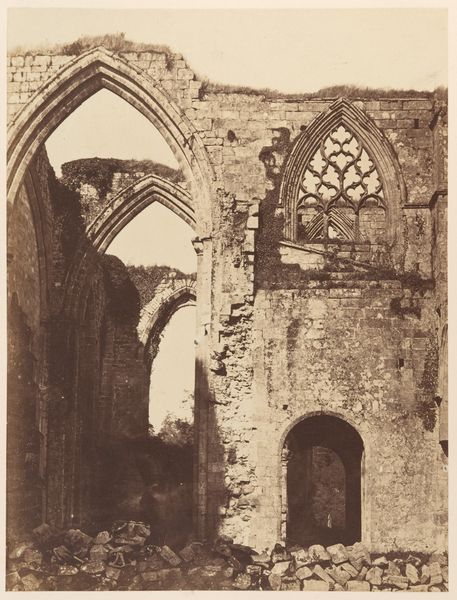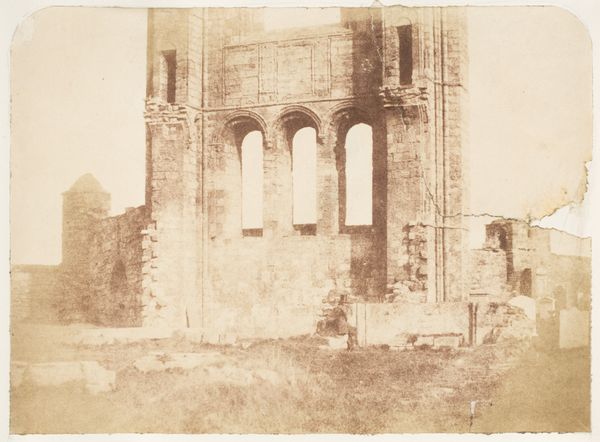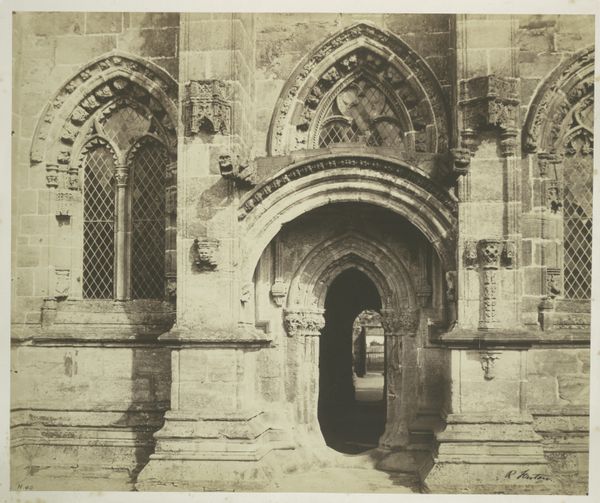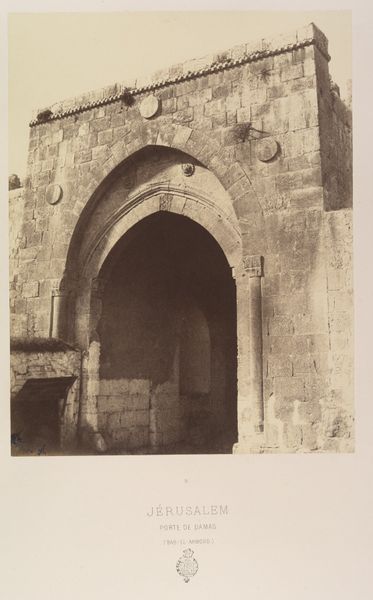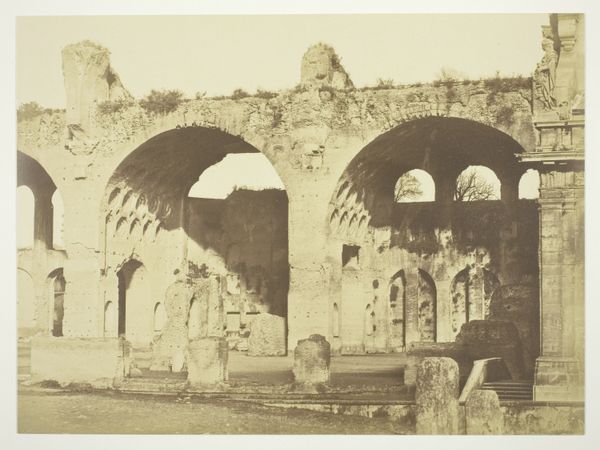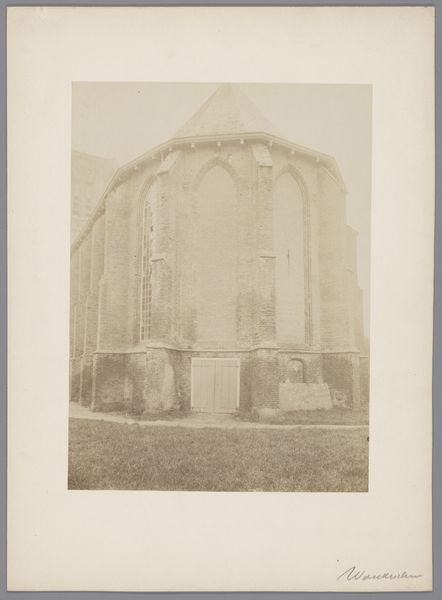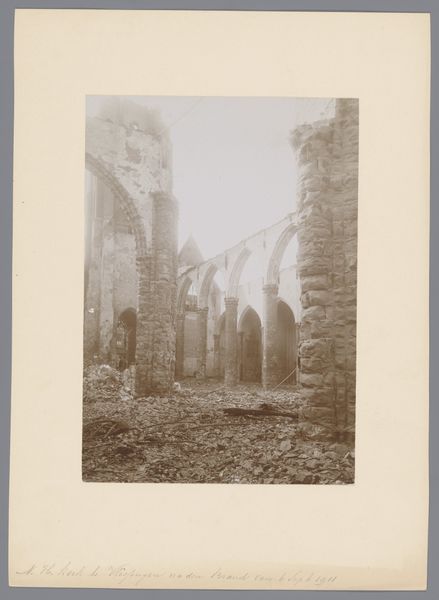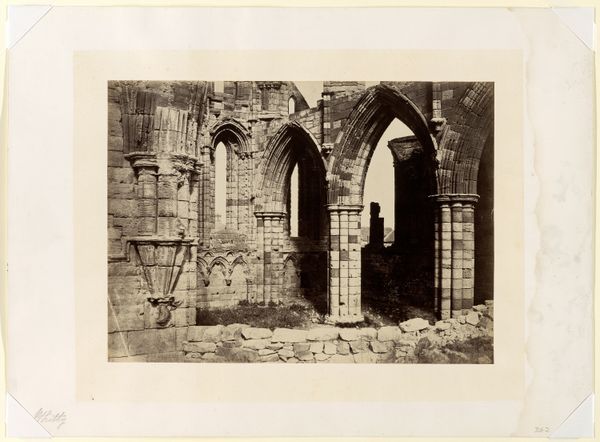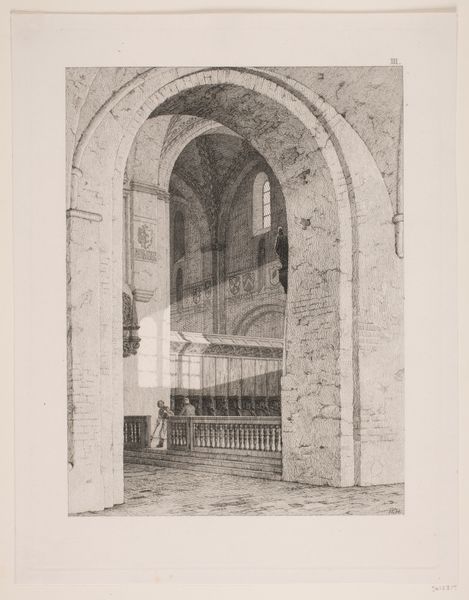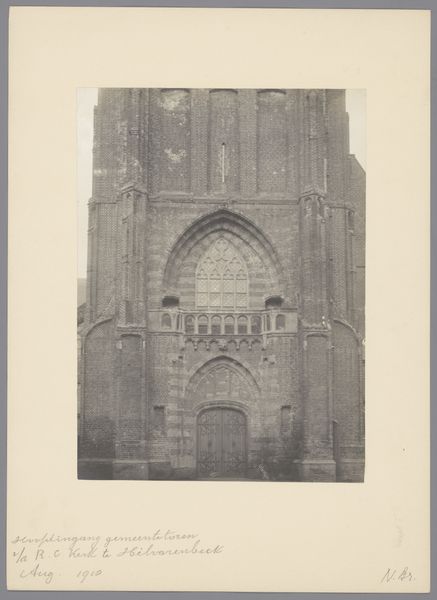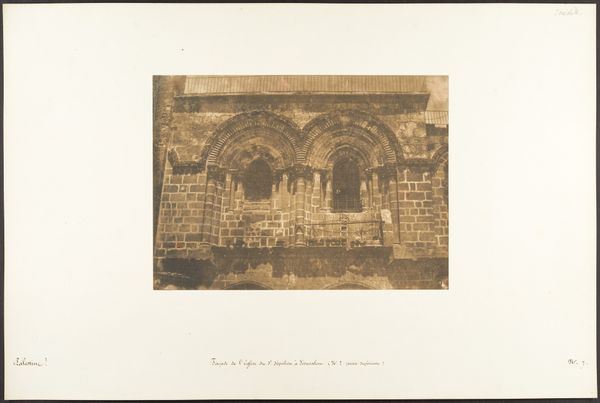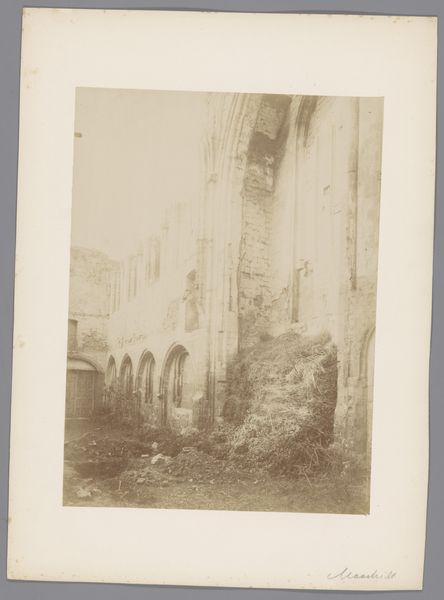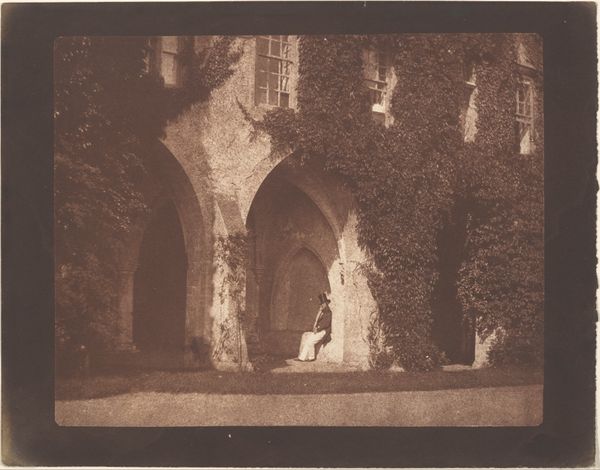
photography, gelatin-silver-print
#
landscape
#
photography
#
gelatin-silver-print
#
islamic-art
Dimensions: Image: 10 7/8 × 8 1/16 in. (27.7 × 20.5 cm) Mount: 17 15/16 × 23 1/4 in. (45.5 × 59 cm)
Copyright: Public Domain
Curator: Looking at this evocative photograph, my immediate response is one of silence. It's as though the stone itself is whispering stories. Editor: Indeed, that is the sensation it wants to provide. The photograph we're considering is a gelatin silver print by Louis de Clercq, titled "Jerusalem. Interior of the Church of Sainte Anne," created around 1860. It's quite compelling when we think about how early in the history of photography this image was made. Curator: Absolutely. The architectural forms are striking. I'm immediately drawn to the interplay of light and shadow; how the light seems to penetrate the solidity of the stone structure. Symbolically, light often represents knowledge or divine presence. Is it trying to imply such notions by its appearance? Editor: I can see that connection. The arches, too, possess considerable power. In architectural symbology, the arch, of course, speaks to heaven, access to the sacred… while the structure itself testifies to an era, a history, maybe even multiple histories layered one atop the other. One of the crucial features of Sainte Anne is its construction atop what's thought to be the birthplace of Mary, mother of Jesus. Curator: And consider the historical implications, then, in representing this space. Who has historically been allowed entry, who is represented in this image’s implied audience, and whose presence is erased? This is Palestine, Jerusalem in the mid-19th Century, deeply fraught intersectional contexts. It’s an intimate glimpse, but it also has many erasures. Editor: True, photography at that moment was of course tied to the power structures of its day. In some sense, we need to see the presence and absence of persons here, even when what's foregrounded is simply this grand structure of human and spiritual aspiration, the visual signifiers are potent here. Curator: And it offers much for interpretation. By considering the symbols interwoven, and simultaneously acknowledging the social context, one can read far more in this than a simple visual landscape. Editor: Precisely, it deepens our appreciation not only for what De Clercq captured, but also the very act of capturing it.
Comments
No comments
Be the first to comment and join the conversation on the ultimate creative platform.
